
Pavla 1/72 Typhoon IB
| KIT #: | 72044 |
| PRICE: | $ |
| DECALS: | Three options |
| REVIEWER: | Carmel J. Attard |
| NOTES: |
Short run, with resin detail
parts and two types of canopies. |

| HISTORY |
The Hawker
Typhoon was regarded as a massive new fighter, the heaviest and most
powerful single seat, single-engined warplane at the time of its design. It
was also to be pressed into operational service before it was fully
developed and in consequence acquires a worse reputation among its pilots
than that of any other fighter preceding it.
Despite many
comments, it was to evolve into one of the most formidable weapons during
the second world war, a close support fighter that was to turn the scale of
many land battles and upset many conceptions of land warfare.
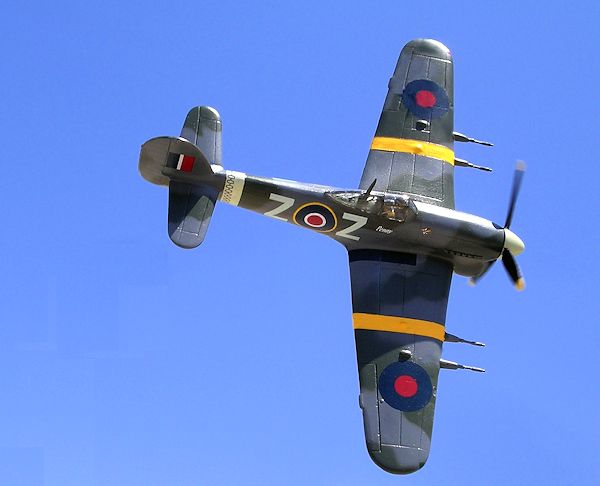 In the
first nine months of its service life far more Typhoons were lost through
structural or engine trouble than were lost in combat and between July and
September 1942 it was estimated that at least one Typhoon failed to return
from each sortie owing to one or other of its defects. Trouble experienced
in power dives was due to structural failure in the tail assembly, where the
component parted company with the rest of the airframe. In fact during the
Dieppe operations in August 1942 when first official mention of the Typhoon
was made, three fighters bounced a formation of FW190s south of Le Treport,
diving out of the sun damaging three of the German fighters but two of the
Typhoons did not pull out of their dive owing to structural failure in their
tail assemblies.
In the
first nine months of its service life far more Typhoons were lost through
structural or engine trouble than were lost in combat and between July and
September 1942 it was estimated that at least one Typhoon failed to return
from each sortie owing to one or other of its defects. Trouble experienced
in power dives was due to structural failure in the tail assembly, where the
component parted company with the rest of the airframe. In fact during the
Dieppe operations in August 1942 when first official mention of the Typhoon
was made, three fighters bounced a formation of FW190s south of Le Treport,
diving out of the sun damaging three of the German fighters but two of the
Typhoons did not pull out of their dive owing to structural failure in their
tail assemblies.
Despite
these inauspicious starts to its service career and the unenviable
reputation the Typhoon had gained, operations continued and accident rate
declined as engine teething trouble were overcomed, though tail failure took
longer to solve.
In November
1942, 609 Squadron led by Wing Commander Roland Beamont was moved to Manston
in an attempt to combat the near-daily raids made by FW190 and could rarely
be intercepted by Spitfires. Two typhoons enjoyed almost immediate success.
The first two Messerschmitt Me 210 fighter-bombers to be destroyed over the
British Isles fell to Typhoons. Later on in January 20th
1943, five FW190s were again destroyed by Typhoons.
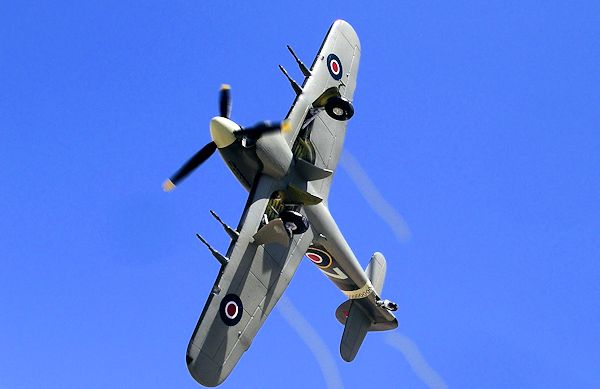 The
Typhoon Mk1B represented by the kit is completed in the markings when flown
by Wing Commander Denys E. Gillam, autumn 1942. Denys Gillam obtained his
flying licence in 1934 and joined the RAF the following year. In June 1938,
Gillam received the AFC for flying food to Rathlin Island in very hazardous
conditions in a Westland Wapiti.
The
Typhoon Mk1B represented by the kit is completed in the markings when flown
by Wing Commander Denys E. Gillam, autumn 1942. Denys Gillam obtained his
flying licence in 1934 and joined the RAF the following year. In June 1938,
Gillam received the AFC for flying food to Rathlin Island in very hazardous
conditions in a Westland Wapiti.
During the
Battle of Britain he served with No. 616 Squadron very successfully. On
September 2nd, 1940 Gillam was shot down by a Bf110 but he was picked up
though by Air Sea Rescue Launch off Dunkirk. March 1942 saw him forming the
first Typhoon Wing at Duxford and subsequently taking command of 20 Sector
2nd TAF in April 1944. In October 1944 he led an attack on the German Staff
Conference at Dordrecht, which killed many of the senior staff of the 15th
Army.
Gillam left
the RAF late in 1945 but rejoined 616 Squadron as a Flight Lieutenant in the
R Auxiliary AF and became Director and Chairman of Homfray Carpets in
Halifax and Deputy Lord Lieutenant of North Yorkshire.
As a Flight
Lieutenant Denys Gillam while serving with 616 Squadron he received the
Distinguished Flying Cross DFC on November 12th
1940. He has been responsible for the destruction of seven enemy aircraft
and probably of four more, and has damaged six. On one occasion during a
combat with a large force of Messerschmitt 110's, he shot one down and his
own aircraft caught fire. He descended by parachute and returned to his
station in time to lead the next patrol.
On another occasion Flight Lieutenant Gillam shot down a Junkers 88 and
landed within eleven minutes from the time he took off.
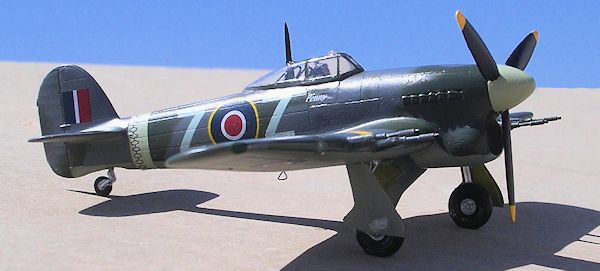 This
time in the rank as a Squadron Leader Denys Gillam received his second DFC,
which was awarded as a bar for a ribbon on the first DFC on the 21st
October 1941. His squadron has carried out 24 sorties against enemy shipping
in which 11 ships were destroyed, 5 were left burning and 18 were damaged.
Squadron Leader Gillam led the squadron on 10 of these missions and
displayed outstanding courage and enthusiasm, taking every opportunity to
seek and destroy enemy vessels."
This
time in the rank as a Squadron Leader Denys Gillam received his second DFC,
which was awarded as a bar for a ribbon on the first DFC on the 21st
October 1941. His squadron has carried out 24 sorties against enemy shipping
in which 11 ships were destroyed, 5 were left burning and 18 were damaged.
Squadron Leader Gillam led the squadron on 10 of these missions and
displayed outstanding courage and enthusiasm, taking every opportunity to
seek and destroy enemy vessels."
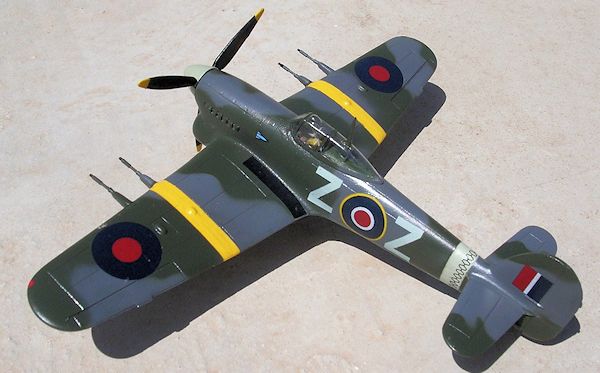 undoubtedly
contributed materially to the notable successes achieved.
undoubtedly
contributed materially to the notable successes achieved.
| EVERYTHING ELSE |
See http://www.modelingmadness.com/review/allies/gb/attardtyph.htm
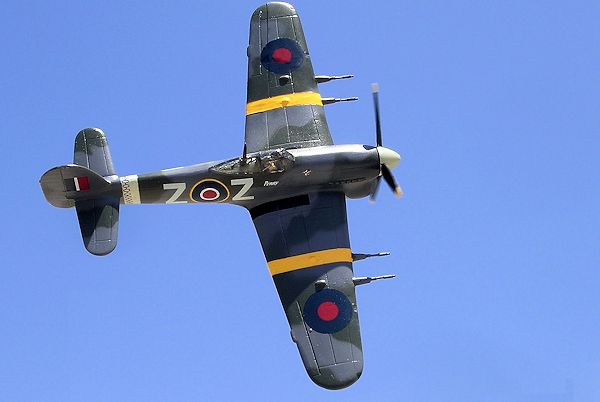 The
only construction feature that differed from previous Pavla kit of the Typhoon
is that the canopy roof had a top blister and also the cannons were those made
of resin and which looked more detailed in shape, as these were not faired with
a cylindrical cover.
The
only construction feature that differed from previous Pavla kit of the Typhoon
is that the canopy roof had a top blister and also the cannons were those made
of resin and which looked more detailed in shape, as these were not faired with
a cylindrical cover.
December 2013
If you would like your product reviewed fairly and fairly quickly, please contact the editor or see other details in the Note to Contributors.